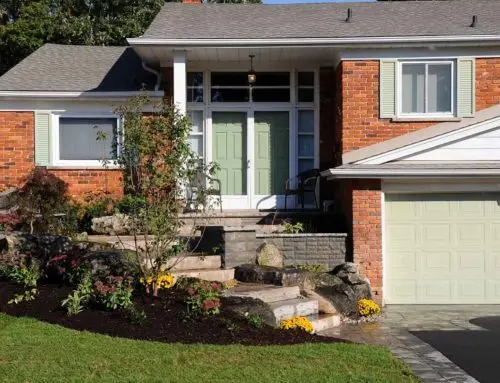The landscape surrounding your home is especially important because it creates visual appeal and increases the value of your home. Real estate agents will tell you that good landscaping can add as much as 20 percent to a property’s value. The ability to access your property is paramount to its appeal. Keep reading to find out how to make the best walkways for gardens.
Regardless what type of material is used for your path or walkway throughout the cultivated landscape, walkways offer homeowners not only beauty, but low maintenance with a greater dimension to the landscape’s design.
A well thought out walkway will provide a way for you and guests to get to your front door or other parts of your property. Whether it leads straight to your front door, a small courtyard garden, pool area or porch, there are many design options to choose among.
When thinking about installing a walkway, there are three important considerations to take into account in your design before beginning your project. Regardless if you decide to install it yourself or have a professional landscaper come in for a consultation on your ideas, you need to consider:
- Width
- Shape
- Paving Materials
Determining Walkway Width
It is very important to determine your walkway’s width, whether it leads from the street to the front door, the driveway to the front door, the driveway to the backyard, or the front yard to the backyard. The walkway should be wide enough that two people can navigate the path comfortably side-by-side.
This is especially important if you’re a social entertainer and hosting parties or family gatherings will likely occur on a regular basis. Ordinarily, a four-foot width is the minimum for a front walkway, but five feet is preferred for its aesthetic appeal. Get more information about walkway dimensions.
Determining the Shape
The first thing to consider in determining the shape of your walkway is to consider the actual size and dimensions of your property. If you happen to have a smaller sized front yard, a simple straight walkway will look best. If your yard is on the larger scale, a curved walkway can add more of a design interest to accommodate the size.
The second factor to consider is your home’s style, such as a traditional Colonial or Victorian style versus a ranch or Mediterranean style that is more informal.
The more formal your home is in appearance, the more inclination for a straight path versus the look of informality and curved walkways. Be cautious to avoid too many curves because then people will take shortcuts through your front lawn. See more about walkway shapes.
Determining the Material
The most important consideration in selecting the material for your walkways or pathways is which material will complement the exterior of your home and property. In choosing your materials, keep in mind that solid paving, such as concrete, stone or pavers, are easier and safer to walk on than stepping stones or gravel.
The most common paver materials used on walkways are:
1. Natural Stone Pavers
- Granite
- Slate
- Brownstone
- Limestone
- Sandstone
- Bluestone
2. Concrete Pavers
Concrete Pavers are manmade products manufactured and produced in factories and the shape and colour choices are endless. You’ll find that there are no limitations when it comes to selecting the right shaped pavers for any walkway.
3. Brick Pavers
Brick Pavers are also manmade products manufactured and processed in factories all over the world. Because they are fired at high temperatures, the firing process produces their earthy color tones.
Enhance Your Landscape
Walkways add charm, interest and curb appeal to any home. A concrete walkway, flagstone steppers or a stepping stone walkway are beautiful ways to create a garden path.
Evergreen Landscaping’s qualified professionals can help you to enhance the look of your property, so contact us today for a consultation.





